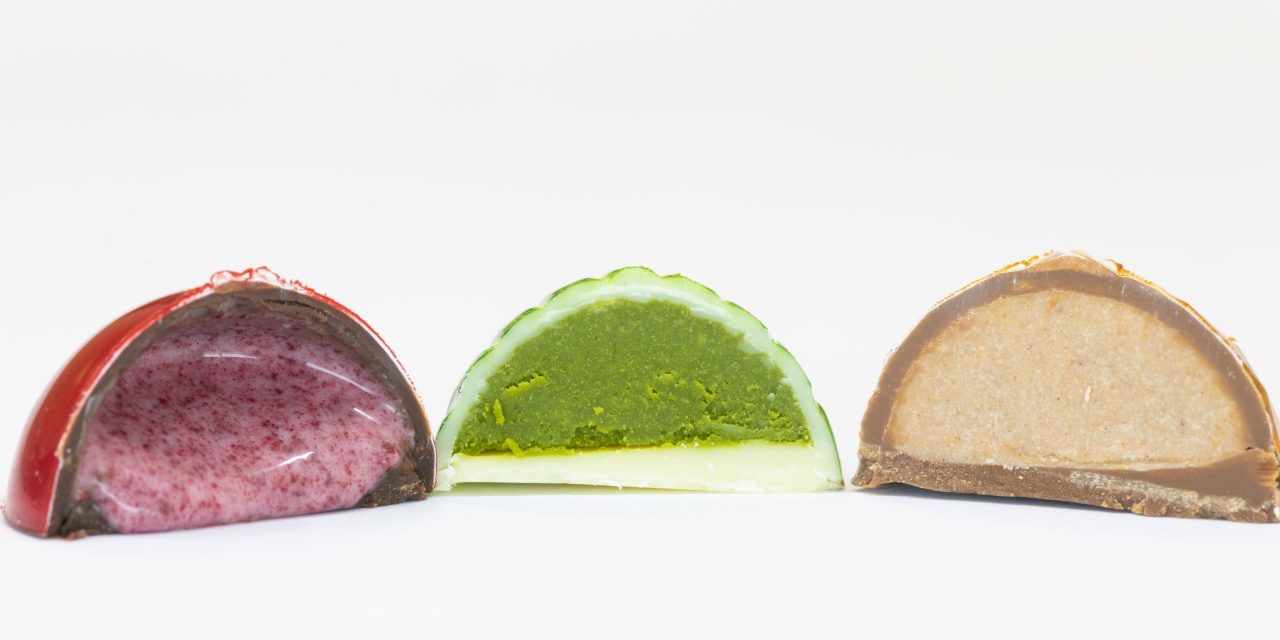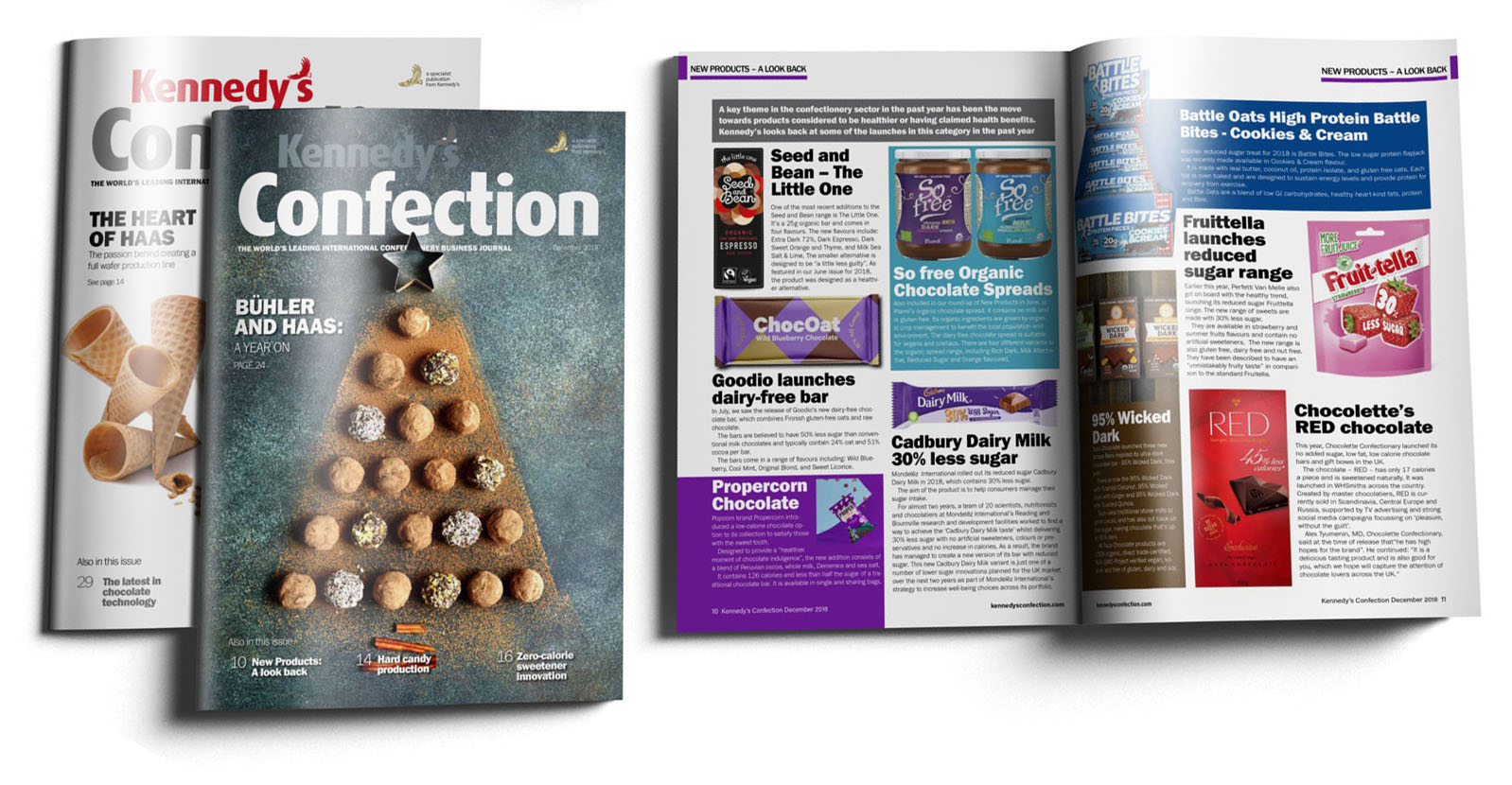Are you making the right oil and fat ingredient choices? Do you want to ensure that your products meet labelling requirements, address consumer demand for more healthy and sustainable options; move to a solution with greater availability or simply add more value to your confectionery offerings? Suzanne Callander gathers advice from some industry experts.
As access to nutritional information improves, consumers are becoming increasingly aware of the impact of different fats and oils on their diets and their health. Most consumers have reported changes in their shopping behaviour – with almost one-in-three consumers reporting that they pay more attention to the ingredients in food and beverages now, and 42% are trying to buy healthier products – according to Cargill’s IngredienTracker 2022.
Fats continue to be one of the top ingredients that consumers look for on the nutritional label of a food product, surpassed only by sugar. Oils are also in the consumer spotlight – those that are recognisable and sound natural, such as organic sunflower and coconut oil, are perceived as being slightly healthier options. Conversely, palm oil and chemical sounding ingredients are perceived as being less healthy and this should be a real consideration for confectionery manufacturers looking to tap into the clean label and healthy eating trend.
“Fats continue to be one of the top ingredients that consumers look for on the nutritional label of a food product, surpassed only by sugar”
Today there are oils and fats available to suit all requirements, take for example, Cargill’s CremoFLEX filling fat range, which can be tailored to suit different specific formulation needs – including the use of RSPO certified palm solutions – and can be used in applications such as filled biscuits and sandwich cookies, wafers, filled chocolates tablets and pralines. “The portfolio is compliant with Cargill’s commitment to ensuring that 100% of its global edible oils portfolio will comply with the World Health Organisation’s (WHO) recommended best practice of a maximum two grams of industrially produced trans-fatty acids (iTFA) per 100 grams fats/oils by the end of 2023, including in countries where there currently is no legislative mandate,” confirms David Van den Einde, Vice President R&D at Cargill Global Edible Oil Solutions. “CremoFLEX also meets this WHO standard (which is also the standard for European Union regulation) and offers the ability to develop indulgent products with a lowered saturated fatty acid (SAFA) by comparison to conventional solutions and provides clean label non-hydrogenated products.”
Palm-oil free
Although there is a fat product designed for almost every application in the confectionery industry, many still contain palm or palm kernel oil. And, despite many of these products now containing certified ingredients – which is designed to show that the ingredient comes from a sustainable source – consumers remain increasingly critical of palm products. This knowledge is what led Nutriswiss, a Swiss refiner of edible oils and fats, to work with its customers to develop a range of palm-free alternatives. Frank Möllering, Research & Development Manager at Nutriswiss, explains further: “Properly processed hydrogenated, and/or restructured oils, and some also certified as organic, and even butter fractions, can work well as palm-oil alternatives in confectionery products, but finding the best working alternative is not an easy task. It depends on factors such as melting point, crystallisation behaviour, stability, shelf-life and organoleptics.
“Palm-free filling fats, glaze masses and spreads are now among the most frequent requests we receive from customers. When advising customers on the best solution, the first step for us is to define the target specifications: what texture is desired, what are the production processes, which raw materials can be used and which should be avoided.”
Frank explains how a combination of coconut, rapeseed or sunflower oil can be used for various baked goods, confectionery and patisserie applications. “The raw materials need to be carefully selected and individually modified to ensure that they have the ideal technological properties for further processing and, for example, will crystallise well in a cooling tunnel.”
Meeting consumer demand for the substitution of palm fat in existing recipes is always a challenge for manufacturers because a simple substitution is usually not possible if the familiar sensory properties and mouthfeel are to be maintained. Compared to other vegetable fats, for example, palm oil is solid at room temperature, which provides the desired melt in chocolate fillings. Therefore, if palm oil is replaced by vegetable oils, it will impact the taste as well as consistency and stability of the end product. To remedy this, the Nutriswiss team develops individual recipes that optimise the end product and also take the manufacturing process into account.
The aim is to prevent the oily parts of the filling fat from migrating into the chocolate coating and forming fat bloom, for example, in confectionery products, filled and non-filled chocolate bars. A film can also form on nut nougat or hazelnut creams and to prevent this, the liquid components need to be fully integrated into the fat crystal lattice. For a high-quality end result, the fat components need to be specifically selected and processed accordingly so that the crystal structure is stable and still melts pleasantly on the tongue.
“Using tools such as differential scanning calorimetry (DCS) analytics, allows us to compare any new recipes with the original, to help ensure the required result is achieved,” concludes Frank.
Cocoa butter substitutes
Using a cocoa butter substitute (CBS) to create chocolate compounds can provide a way to reduce formulation costs for products such as confectionery bars, tablets, and baked goods. However, many CBSs on the market currently present issues with bloom and sensory qualities if the amount of cocoa ingredients exceeds 5%. AAK, however, has recently launched a new CBS that is said to facilitate higher levels of cocoa in chocolate compounds.
AAKs CEBES Choco 15 is a plant-based CBS compound that allows up to 15% of cocoa ingredients for an improved cocoa flavour. “It supports a long shelf life and avoids bloom even in high-cocoa recipes, ensuring products retain a glossy appearance, remain hard and stable at room temperature. In addition, it is free from trans-fatty acids (TFAs) and has cost-efficient processing, with no tempering process required, while maintaining a fast setting time,” says Luis Parra, Global Director of Chocolate & Confectionery Fats at AAK. “We believe that this new the compound is the only one on the market that allows up to 15% of cocoa ingredients.”
With market trends indicating that affordable indulgence will be essential in a recessionary environment, with consumers increasingly seeking out high-quality treats at more modest prices, AAK believes it can offer a cost-effective solution that can help confectionery brands deliver a more authentic chocolate experience while reducing formulation costs. “While cost is becoming an increasingly important factor for consumers, taste remains the primary driver behind repeat chocolate confectionery purchasing decisions,” concludes Luca.
Organic options
When it comes to producing new confectionery products today there can be formulation challenges, pointed out Dr Naveen Pessani, Technical Category Manager for Chocolate & Confectionery at ofi. “It is therefore very important for us to understand the specific functionality that customers are looking for, such as quick melting or the need for a cooling effect. The level and type of fat or oil used in a product can have a big effect on the overall taste, texture, and quality, so finding the right one is essential.”
In response to the rise in healthy eating trends, one area of R&D that ofi has focused on is its organic offerings. “This is an area that has seen immense growth in recent years,” says Naveen. “We recently launched our first 100% segregated organic cocoa range, which includes Astra O Organic Cocoa Butter. We source cocoa from organic certified farms from a variety of origins. The cocoa beans are traced through the transportation process to ensure that the integrity of the organic certification is maintained. And through AtSource – our sustainability management system – we can offer detailed metrics about the supply chain.”
Of course, cocoa butter which comes from cocoa beans, is an important ingredient in chocolate and confectionary products – providing specific taste and textural characteristics. “The fats found in cocoa butter are essential for producing high-quality, indulgent chocolate-based products,” pointed out Naveen. “So, it is important that we are able to provide organic alternatives to regular cocoa butter, that meet the quality standards as our non-organic offering, Astra A Cocoa Butter. When using organic options and meeting certified and traceable labelling requirements, confectioners will still want to achieve the same flavour and texture of the original product.”
Editorial contact:
Editor: Kiran Grewal kgrewal@kennedys.co.uk







